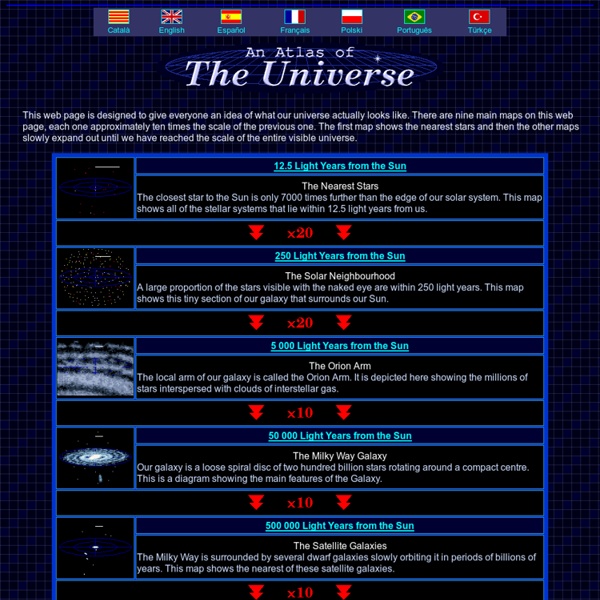



Molecular Movies Go Hollywood BioVision's latest animation shows how food is converted into energy. By John Roach, Contributing Writer, NBC News Biologists are using the kind of animation technology you might see in a multimillion-dollar "Toy Story" movie to show the general public how molecules inside a cell work. The resulting high-tech visual aids have found their way into thousands of high-school classrooms, and they've been watched millions of times on video-sharing websites such as YouTube. That's the kind of success Robert Lue, director of life sciences education at Harvard University and the creator of the BioVisions project, has been hoping to achieve. "It is very much about how do you put science in context, how do you take advantage of the fact that we are visual animals, that we in fact understand the world through our eyes to a significant degree, and apply that reality of who we are as animals to the way in which we perceive science," he told me. More stories on the science of movies and animations:
Hydroponic Systems Water Culture or Aquaculture Aggregate Culture Aeroponics Continuous Flow Systems Water Culture or Aquaculture The water culture method of hydroponics is the simplest to set up on a small scale. In this system the plant roots are totally immersed in a nutrient solution. The actual design of the system is limited only by the imagination of the builder. A standard tray or tank is shown in Figure 1. You can make a small system from a child's wading pool, a plastic pail, a fish tank, or a drinking tumbler. Figure 1. Short plants such as lettuce and spinach will usually support themselves. Figure 2. Vining plants such as cucumbers and tomatoes must be supported by string. Change the nutrient solution every two weeks when the plants are small and once a week as they begin to mature. Aggregate Culture Growing plants in aggregates such as sand or gravel is often preferred to the water culture method since the aggregate helps to support the roots. Figure 3. Figure 4. Figure 5. Figure 6. Aeroponics
The Incredible Relative Speed of the Earth Embed This Quick Fact: <a href=" title="The Incredible Relative Speed of the Earth"><img src=" alt="" title="The Incredible Relative Speed of the Earth" border="0" /></a><br />Source: <a href=" title="Random Quick Facts">Random Quick Facts</a> Click Here for the Sources and to Learn More Interesting Astronomy/Earth Related Facts Text Version Along with orbiting around the sun at 66,600 mph, the Earth is also rotating at its axis at about 1,070 miles per hour. Surgical Scalpel Blades, Handles and Disposable Scalpels - Swann-Morton
The Story Of The Pioneer Plaque – Beginning Pioneer 10 was the first object made by humans to ever go past the solar system and travel into the universe at large. It was a spacecraft that was sent by NASA to methodically snap photos of Jupiter and beam them back to Earth. But it also carried with it pictures of it’s own that were etched into a small golden plaque. These pictures are intended to communicate very specific stories to anyone or anything Pioneer 10 might come across in it’s voyage across the galaxy. NASA didn’t originally intend to send such an unusual object out with Pioneer 10. Trying to communicate far in the future with aliens in some remote corner of the galaxy was something the cautious bureaucracy definitely did not want to venture into back then. It was only through the efforts of someone as dedicated and charismatic as Carl Sagan that it even had a remote chance of being approved by NASA administrators. There was only one problem, NASA said the plaque had to be done in three weeks or not at all. Humans.
Poisons Poisons All preparation and handling of toxic substances must be conducted with great care. Work in a well-ventilated area, wear gloves, goggles and a respirator. I haven't provided much information on identifying the plants or mushrooms required for making some of these poisons because detailed information on this subject is widely available in books and on the internet. Ethylene Glycol This is the active ingredient in automotive anti-freeze. The best application for this poison is to top up a half-empty liquor bottle with it and leave it where some unlucky non-White will find it. Methyl Alcohol Also known as Wood Alcohol, this substance is deadly if more than just a few mouthfuls are swallowed and medical treatment is not received soon after ingestion. Cyanide Cyanide occurs naturally in the seeds of a number of common plants. The operative should try to obtain this toxin by other means. Arsenic Arsenic has been known since ancient times. Nicotine (Tobacco) Belladonna Castor Bean (Ricin)
Eric's Slide Rule Site Mechanical Music Digest - Tech Ising's Formula How big a mouth in a flue pipe? I had the luck to stumble on the wisdom of Hartmuth Ising (1971) when my interest in pipes started some 20 years ago. First the dimensions and constants we are talking about: H [m] is the height of the cut-up, the distance the air jet travels across the mouth. You can use other consistent unit systems than SI, for instance cgs, but beware of peculiar additional constants if you try to drag in any inches. The first simple basic relation is Bernoulli's law which tells you that V = sqrt(2*P/rho) [m/s] From this you immediately find the air consumption rate Q = V*W*D [m^3/s] And now comes what ought to be known as the Holy Gospel of voicing: Thou shalt make the intonation number I of Ising to be more than 2 but less than 3, where I = sqrt(2*P*D/(rho*H*H*H))/F [-] [unit-less] With I=2 you get maximum efficiency. The width W does not come in here, but will of course affect sound power and air consumption.